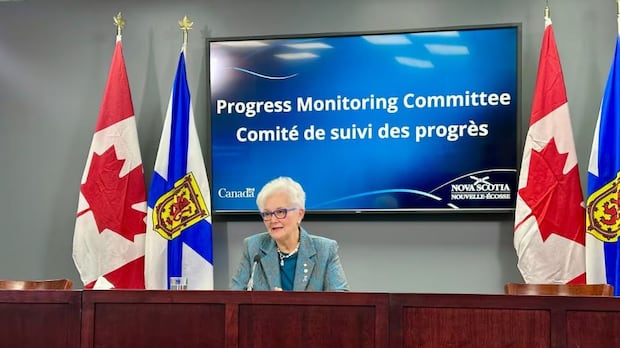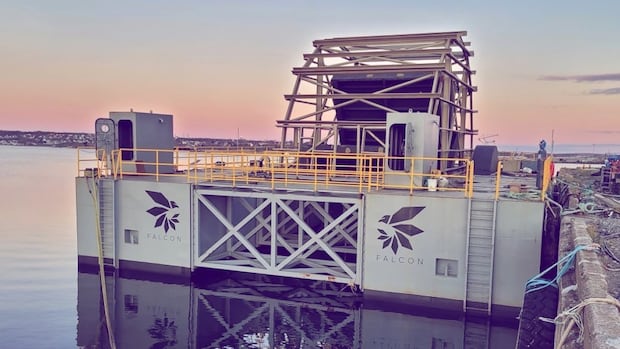Nova Scotia government buys two new cutting-edge machines to treat cancer

The Nova Scotia government will spend $20 million on two new cutting-edge radiation therapy machines, a move the province’s director of cancer care said would provide “a beacon of hope” to patients.
“My colleagues and I know the stark reality that every Nova Scotian has a higher probability of getting cancer compared to other provinces in the country,” Dr. Helmut Hollenhorst told people gathered at a news conference in Halifax on Wednesday.
“And because of that, we want everyone in this province to have confidence in our system and to know we have the tools to help them fight and win that battle.”
Health Minister Michelle Thompson told the crowd that those tools will now include two more Ethos radiation therapy systems with a technology called hypersight.
The province received a similar machine a year ago and it’s been used for clinical trials since then. Patients who are not involved in the trials can begin receiving treatment with the machine in January. The two additional machines, which will be paid for over five years, will be online in the coming months following some prep work, said Thompson.
Nova Scotia is the first place in the world to have access to the machines, designed by Varian Medical Systems. Varian has been working with researchers in Nova Scotia for close to 20 years.
“We’re on the cusp of a whole new paradigm in caring for our patients,” said Dr. James Robar, chief of medical physics for Nova Scotia Health.
“And we’re leading the country and the world in doing this.”
Hollenhorst and Robar are most enthusiastic about the precision of the new technology.
Traditionally, as part of a cancer patient’s diagnosis, imaging tools are used to map the tumour and guide a treatment plan.
But that imaging represents a snapshot in time and does not account for the way the body can change and organs shift between treatments. The Ethos technology gathers updated scans of higher resolution in a matter of seconds before each treatment, leading to more precise work, said Hollenhorst.
“With this new technology we actually can instantly scan our patients in just six seconds and artificial intelligence will adjust and adapt the previous treatment plan to best fit and form the dose distribution around the tumour and best spare health tissues,” he said.

That precision means dosages can be increased thanks to the lowered risk of exposing healthy tissue around the tumour, which in turn should require fewer treatments.
“We are expecting to see much better outcomes in so many ways,” said Hollenhorst
Thompson said those benefits, along with the response from people treating patients, made buying the new machines an easy sell.
“When you’ve been in this business for a long time you don’t often see clinicians oozing with excitement. So when you see people who have been in this journey for 30 years or 25 years and they’re thrilled with this investment, I think it speaks really highly about we’re on the right track.”
MORE TOP STORIES




